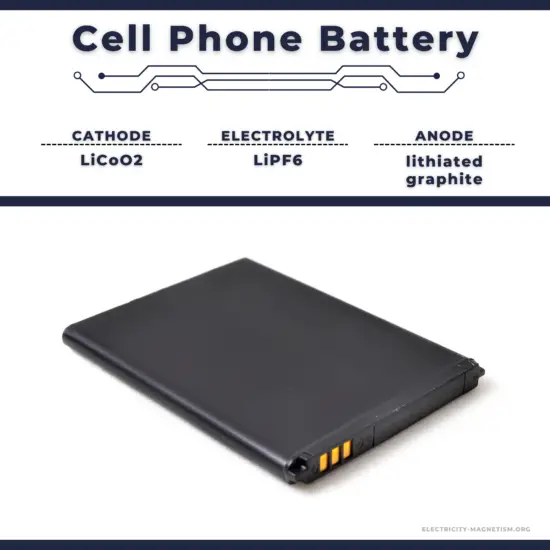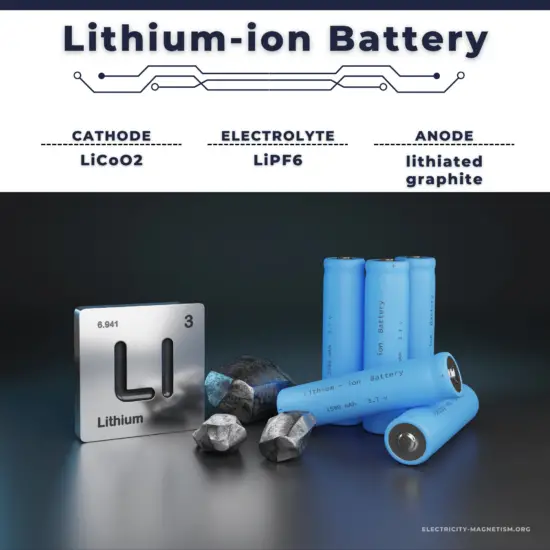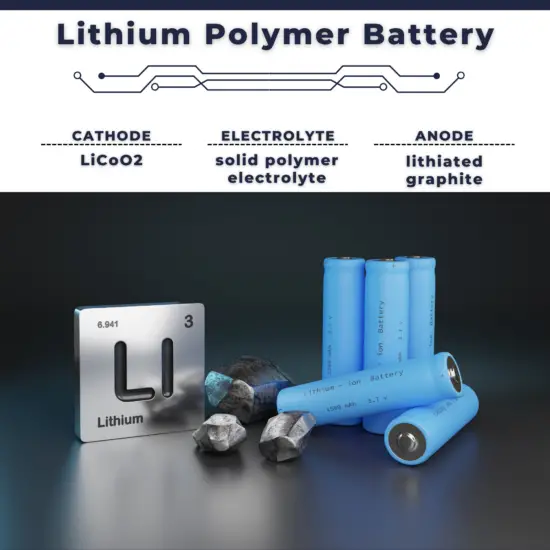30-second summary
Cell Phone Battery
Nowadays, the vast majority of cell phone batteries are pouch-type lithium-ion batteries, which can be fully charged 300–500 times, depending on how users take care of the battery and the charging techniques used. For pouch batteries, the absence of a case gives pouch cells the highest gravimetric energy density.
A lithium-ion battery, also known as the Li-ion battery, is a type of secondary (rechargeable) battery composed of cells in which lithium ions move from the anode through an electrolyte to the cathode during discharge and back when charging.
There are several specific advantages to lithium-ion batteries. The most important advantages are their high cell voltage, high energy density, and no memory effect.

Characteristics of Cell Phone Batteries
To compare and understand the capability of each battery, some important parameters are characteristic of each battery, also within a type of battery. These parameters are a reference when a battery is needed, and specific qualities are required since batteries are used in all types of devices and for infinite purposes.
Cell Voltage
The voltage of electric batteries is created by the potential difference of the materials that compose the positive and negative electrodes in the electrochemical reaction.
Almost all lithium-ion cells work at 3.8 volts. In order to make current flow from the charger to the battery, there must be a potential difference. Therefore battery chargers or USBs for almost all smartphones provide a voltage of 5V.
Cut-off Voltage
The cut-off voltage is the minimum allowable voltage. It is this voltage that generally defines the “empty” state of the battery.
Li-ion battery has a higher cut-off voltage of around 3.2 V. Its nominal voltage is between 3.6 to 3.8 V; its maximum charging voltage can go to 4– 4.2 V max. The Li‑ion can be discharged to 3V and lower; however, with a discharge to 3.3V (at room temperature), about 92–98% of the capacity is used. Importantly, particularly in the case of lithium-ion batteries used in the vast majority of portable electronics today, a voltage cut-off below 3.2V can lead to chemical instability in the cell, resulting in a reduced battery lifetime.
Capacity
The coulometric capacity is the total Amp-hours available when the battery is discharged at a certain discharge current from 100% SOC to the cut-off voltage.
Laptop battery capacity typically ranges from 3,000mAh (milliamp hours) to 4,000 mAh.
C-rate of Battery
C-rate is used to express how fast a battery is discharged or charged relative to its maximum capacity. It has units h−1. A 1C rate means that the discharge current will discharge the entire battery in 1 hour.
Most li-ion batteries can only withstand a maximum temperature of 60°C and are recommended to be charged at a maximum of 45°C under a 0.5C charge rate. C rating for a 18650 battery is usually 1C, meaning we can consume a maximum of 2.85A from the battery.
Self-discharge
Batteries gradually self-discharge even if not connected and delivering current. This is due to non-current-producing “side” chemical reactions that occur within the cell even when no load is applied.
Li-ion rechargeable batteries have a self-discharge rate typically stated by manufacturers to be 1.5–2% per month. The rate increases with temperature and state of charge.
Degradation
Some degradation of rechargeable batteries occurs on each charge-discharge cycle. Degradation usually occurs because electrolyte migrates away from the electrodes or because active material detaches from the electrodes.
Most modern 18650 lithium-ion batteries, which are common for laptop batteries, have a typical cycle life of 300 – 500 (charge, discharge cycles), and a cycle is defined as charging a completely dead battery to 100% and then draining it to zero again. Usually, a cell phone battery lasts between two and three years. The golden rule for optimal charging is to keep your battery topped up between 30% and 90% most of the time. Top it up when it drops below 50%, but unplug it before it hits 100%.
Depth of Discharge
Depth of discharge is a measure of how much energy has been withdrawn from a battery and is expressed as a percentage of full capacity. For example, a 100 Ah battery from which 40 Ah has been withdrawn has undergone a 40% depth of discharge (DOD).
For lithium-ion batteries, the cycle life of a cell strongly depends on the DOD. The loss of lithium ions and active electrode material is higher for larger DOD cycles. At high DODs, additional degradation mechanisms can occur, resulting in the decomposition and dissolution of cathode material and capacity fading.










